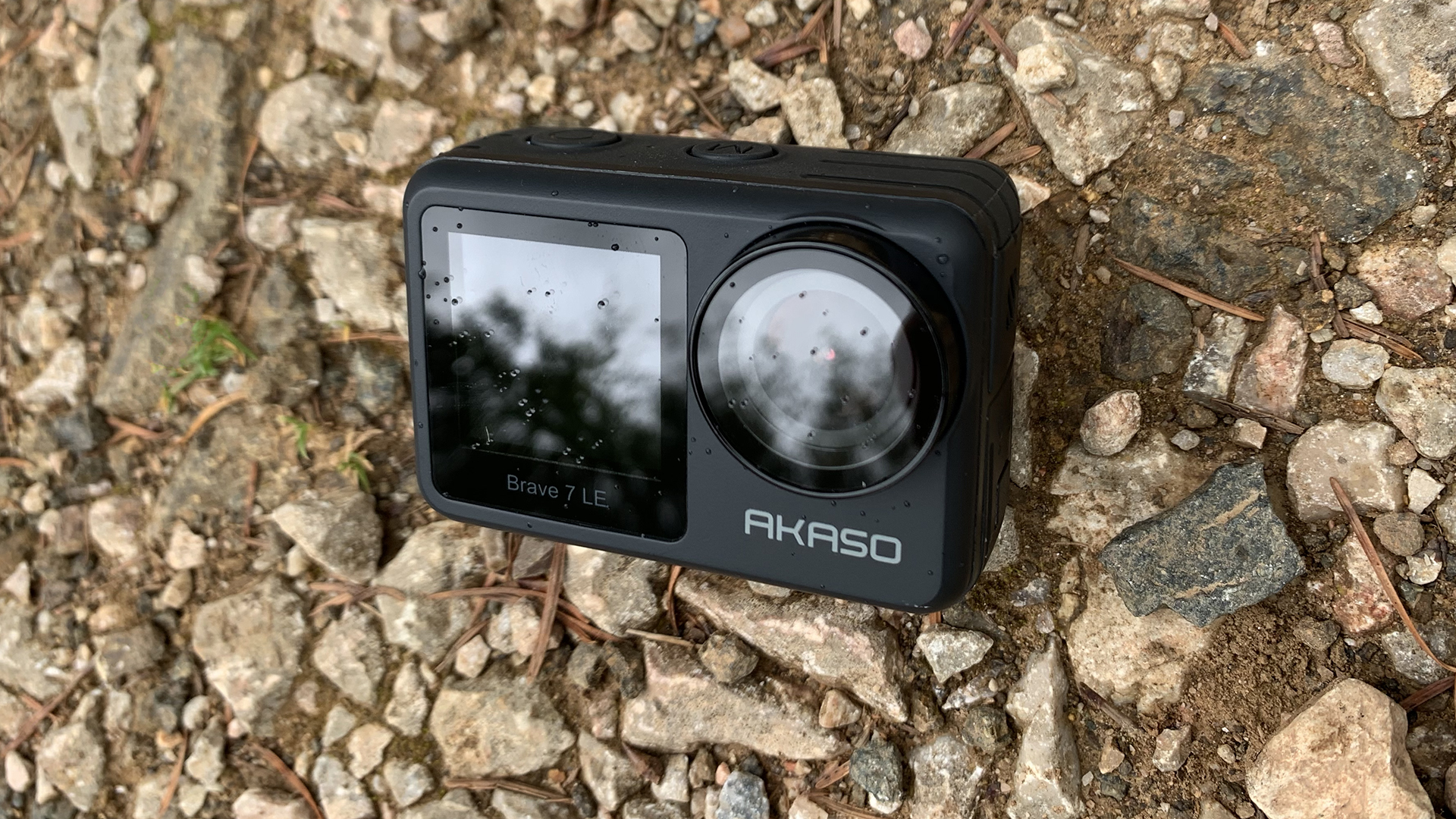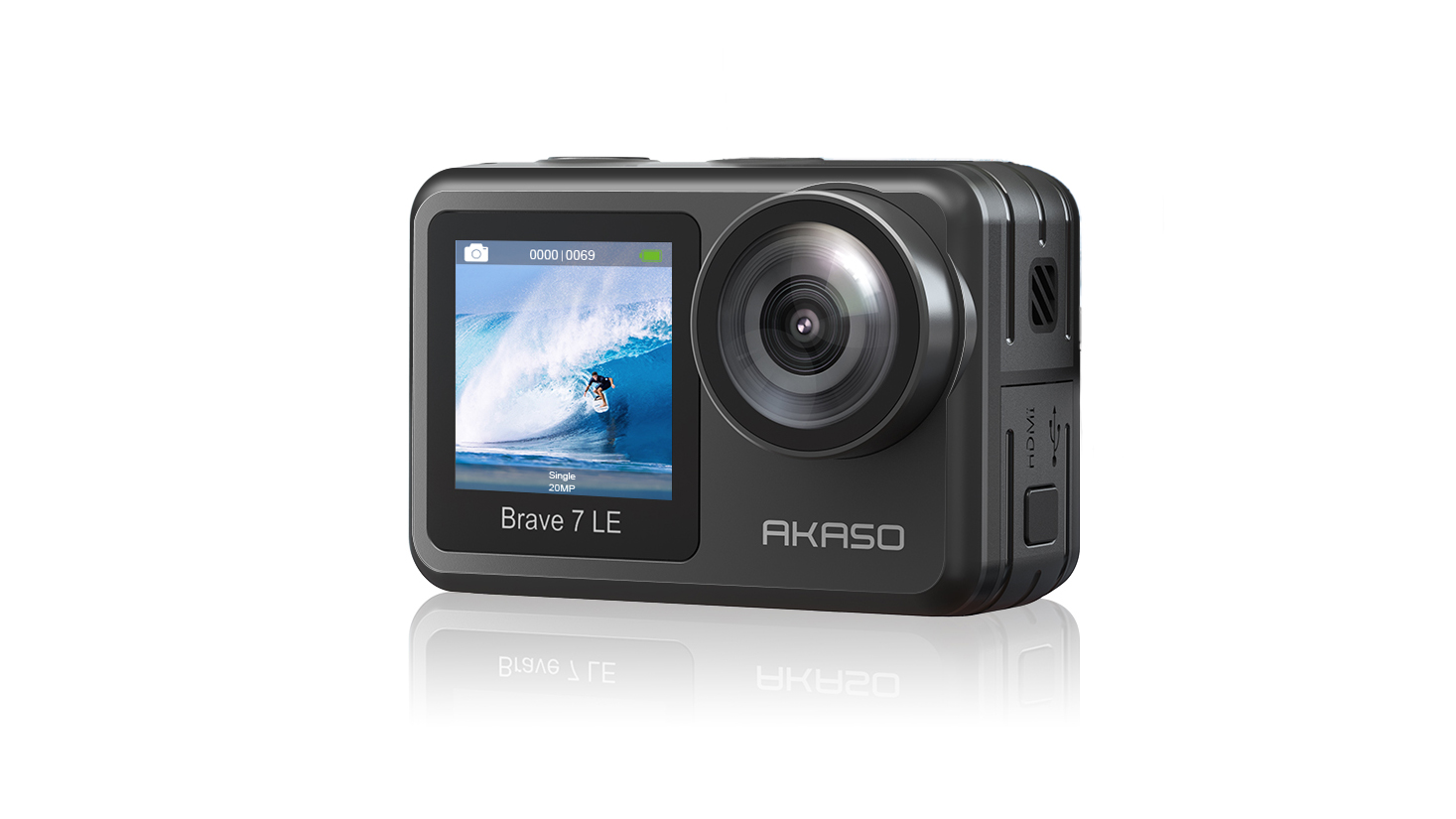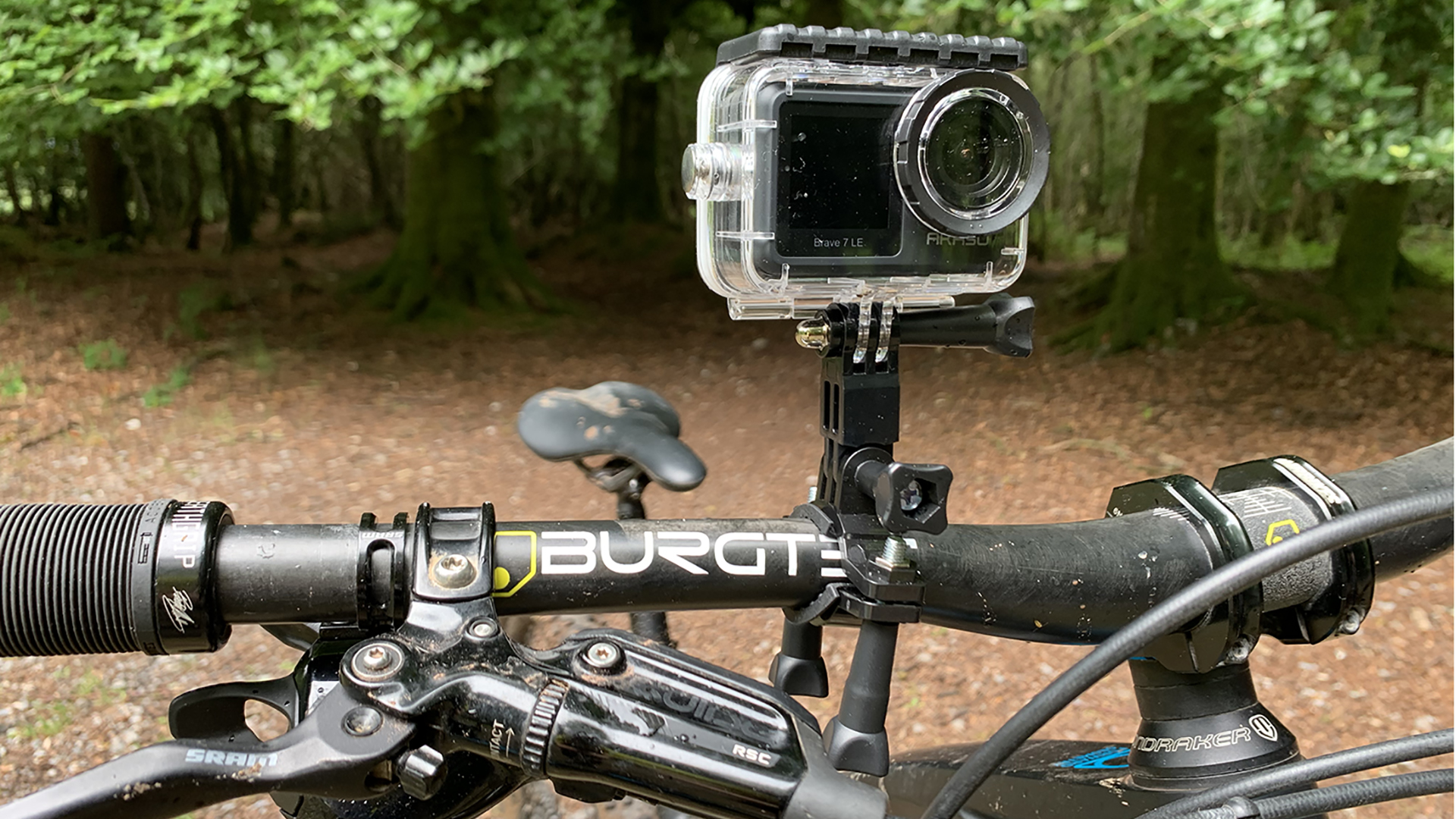Akaso Brave 7 LE action camera review: A front screen-enabled action cam with a bargain price tag
It's not going to compete with a GoPro, but the Akaso Brave 7 LE offers plenty of camera for your cash... including that all-important front screen


While it’s never going to outperform market-leading action cameras like the GoPro HERO8 Black or the DJI Osmo Action, the Akaso Brave 7 LE costs half the price of such cameras and it has a wider range of features than any similarly priced rivals, none of which boast a front screen. If you're looking for a well put together camera at a bargain price, the Akaso Brave 7 LE makes an excellent choice.
-
+
Front and rear screens
-
+
You get a lot of camera for the money
-
+
Two batteries, remote and mounts included
-
-
Problematic app support
Why you can trust T3
The Akaso Brave 7 SE is the latest offering from wallet-friendly camera specialist Akaso, and its first camera to feature a front-facing screen as well as a rear touchscreen. The front screen is a massively useful asset for vloggers and the like as it enables you accurately frame your shot when in front of the lens.
When DJI launched the Osmo Action with an integrated front screen, shaking GoPro's hold in our best action camera ranking, the feature was something that many people anticipated would also appear on GoPros next flagship cam, too. But as it turned out, GoPro opted to only offer the HERO 8 Black with a front screen as an optional extra (it was built into the HERO 9 Black, note). Cue advantage seized by Akaso with the Brave 7 LE – in this regard at least.
A stripped-back, even more wallet-friendly version of the Akaso Brave 7, the 7 LE is a contender for both our best budget action camera guide and our best GoPro alternatives guide. It's also – spoiler – a better buy, we think, than the current Akaso Brave 8 flagship. Read on for our full Akaso Brave 7 LE review.
- Explore our guide to the best GoPros
- Browse the best cheap GoPro deals for any current offers
Akaso Brave 7 LE review: specs
- Video: 4K30, 2.7K60, 1080P120, 720P240
- Photo: 20MP
- Digital lenses: Super wide, wide, medium, narrow
- Burst: 3, 7, 15 and 30 shots
- Time-lapse: 3, 5, 10, 30, 60 second intervals
- Long exposure: 1, 2, 5, 8, 30 and 60 seconds
- Screens: 2-inch rear touchscreen and 1.5-inch front screen
- Waterproofing: 1m without a case, or 30m with included case
- GPS: No
- Voice control: Yes
- Stabilisation: 6-axis EIS 2.0
- App support : Yes
- Other: Driving mode
Akaso Brave 7 LE review: Design and setup
The Brave 7 LE fits nicely in the palm of your hand. At 127g, it has a sturdy weight to it and its contoured metal and plastic body looks and feels like a camera with a heftier price tag. Two buttons on top of the body operate the shutter, switch between the front and rear screens and let you cycle through the shooting and setup modes – which can also be accessed via the rear touchscreen.
To attach the Akaso Brave 7 LE to the vast majority of mounts available (you get a wide selection included with the camera), you’ll need to first place it in the supplied waterproof housing. While Akaso say the housing can handle an impressive depth of 30m, it also makes the camera pretty much soundproof too. Fortunately though, the camera has a standard tripod thread in its base and comes with bolt-on mounting accessories, so using it without the waterproof housing isn’t a problem.

Akaso Brave 7 LE review: Features and usability
With only two other action cameras with front screens currently on the market (the DJI Osmo Action and Sony RX0 II), the Brave 7 LE is by far the least expensive member of this select group. At 1.5-inches, the Brave’s front screen maybe pretty small, but it’s a useful asset nonetheless.
The camera also sports a number of features found on cameras with higher price tags, such as voice control, time-lapse facilities and six-axis image stabilisation. While the stabilisation can’t complete with the likes of GoPro’s Hypersmooth, it made footage of mountain biking down rocky trails look pretty smooth, in stark contrast to the vomit-inducing version shot with the stabilisation turned off.
Get all the latest news, reviews, deals and buying guides on gorgeous tech, home and active products from the T3 experts
You can connect the camera to your smartphone via the Akaso Go app. Once paired by the Akaso’s local wifi, it’s easy to frame your shot and operate the camera shutter from your phone. You can also view content stored on the camera. Though in testing, the videos dropped frames while viewing them on our iPhone – a problem that persisted even with videos shot at lower resolutions.

Akaso Brave 7 LE review: Video and stills
While the Brave 7 LE’s highest video capability of 4K at 30 frames per second is more than enough for most users, there are plenty of action cameras that can record in 4K at 60 frames per second. The recorded video looks decent enough whatever the conditions, though the footage is not quite as vibrant as the best on the market. We also found the camera was a touch slow to react when presented with sudden changes in light conditions.
With a 20MP sensor and lots of useful shooting options, including long exposure settings, the Brave 7 LE makes a decent pocket-sized stills camera that is tough enough to be used in any weather.
Akaso Brave 7 LE review: Verdict
With a highly competitive price tag, the Akaso Brave 7 LE puts a front-facing screen equipped camera within reach of those on a budget. It’s also a rugged, well equipped and capable action camera in its own right. Yes, we experienced some issues with the app, but they will hopefully be fixed in future updates. While Brave 7 LE will undoubtedly be a big hit with vloggers, this great value and highly versatile camera is well worthy of serious consideration whether you like to get in front of the camera or not.
Rich Owen has been frantically riding mountain bikes since the early 90s and is a former editor of What Mountain Bike magazine. He’s also a surfer with over 20 years’ experience and lives near North Devon’s best beach breaks.

